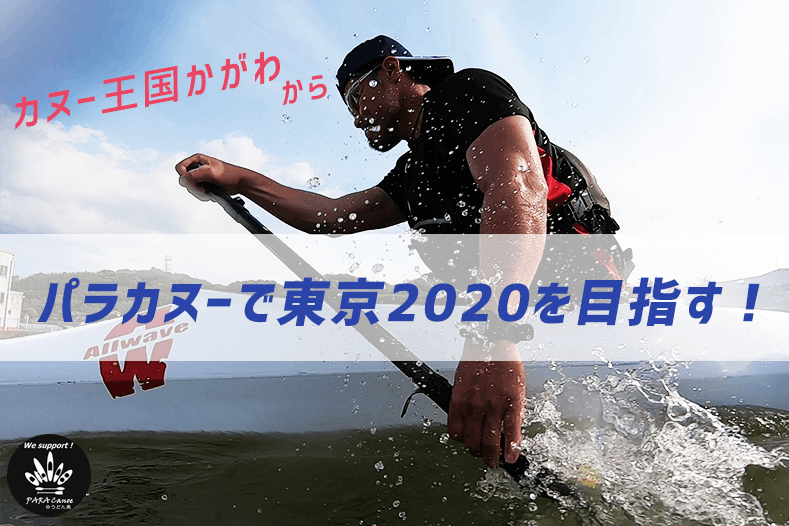
Greeting
Welcome to my web page!
My name is Koichi Imai. I’m a member of the Paracanoe Association of Kagawa Prefecture. As a paracanoe athlete, I’m working hard every day to win a seat on Japan’s team for the Tokyo Olympics of 2020.

In order for me to accomplish my goal and compete in the Olympic in two categories of paracanoe sprint, I will need financial assistance from supporters like you. Cloud Funding has been set up for your donation if you wish to support my activity after reading the articles below. Your support will be greatly appreciated.
*Paracanoe (Canoe sprint for paralyzed athletes)
Paralyzed athletes qualified for official meets are limited to the athletes who are paralyzed from the waist down and meet some additional conditions. Although it depends on the weather, paracanoe is a race on calm water, in which athletes compete on how fast they can paddle for a distance of 200m. Athletes are classified into three levels by degrees of impairment and compete within each class. There are two categories, Kayak and Va’a, for both male and female.
I raced in both categories at the competition on March 31, which was to select Japan Team members for world competitions this year (2019) and took 3rdplace in Kayak (KL3) and 2ndplace in Va’a (VL3).
Being Handicapped and Discovering Canoe
I am physically disabled from having had to amputate my left leg at mid-thigh. It happened 6 years ago when cancer (malignant sarcoma) developed about 5 cm below left knee for unknown reasons.
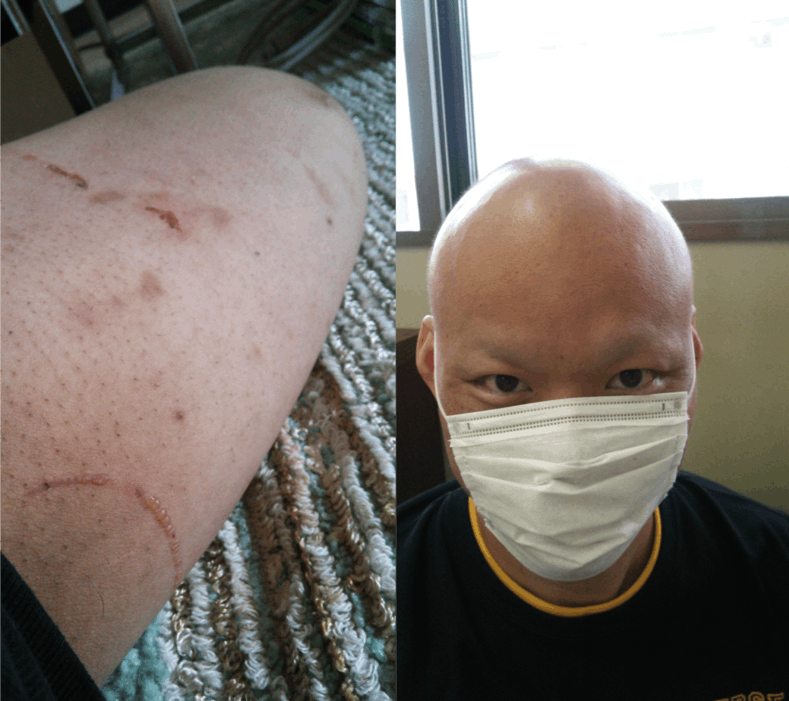
When I left the hospital after having amputated my left leg and completing the chemotherapy that followed, I started to swim to recover my health. It must be my nature, every time I started something new, I become engrossed in it. Before I knew it, I had set a goal to win first place at the National Sports Meet for the Disabled (in Japan). After 2 years of hard work, I was able to win first place in 50m free style.
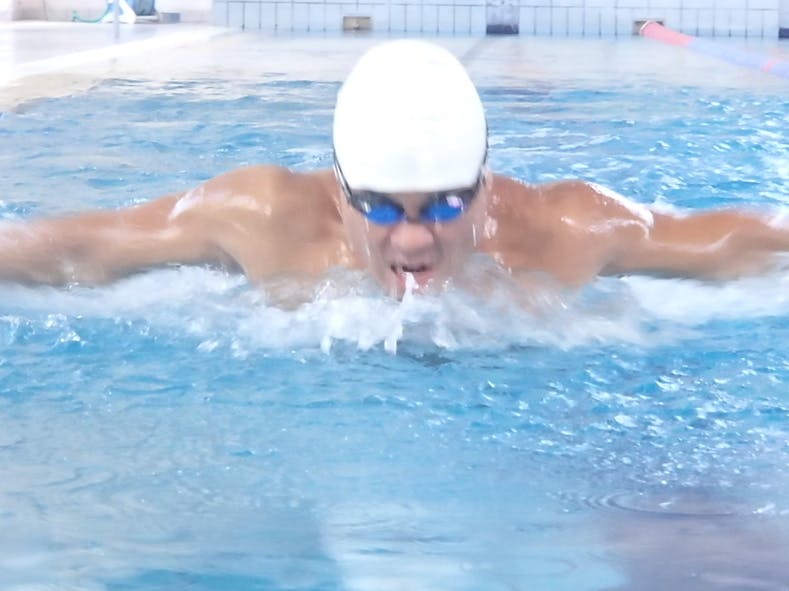
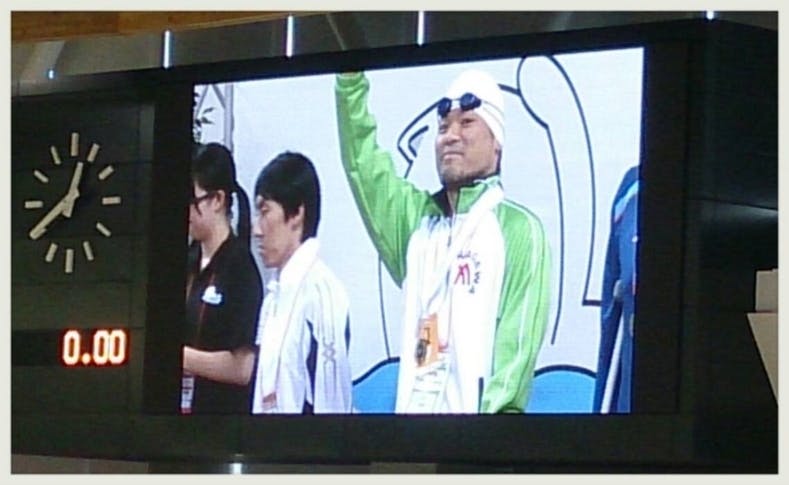
Just about the time I accomplished my goal in swimming, I remembered my wife telling me that she had won first place in a national competition of canoe when she was in high school. With that, I visited a canoe club in Mitoyo-shi, Kagawa Prefecture, where alumni of Takase High School Canoe Club coach, and experienced canoe ride; my first encounter of canoe.
Struggle in Freezing Cold Water of Winter
October 2017, the canoe I rode for the first time at Takase B & G Marine Center was a type that has great stability designed for the beginners. Placed next to it was a sprint canoe, slim shaped and cool looking. So fascinated, I had to try to “ride”, right? The result was far from “ride”, for the moment I got on, I fell right into the water.
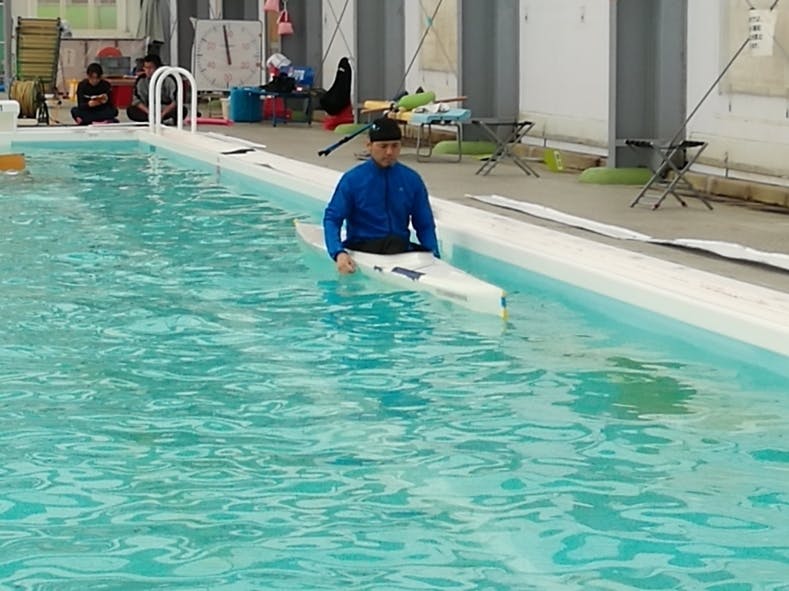
Later, I heard that it usually took 1 to 2 months for a sprinter just to manage to ride, who started canoe in freshman year of high school and practiced every day. However, it was the very moment I felt a strong urge to “conquer” the sprint canoe. The first battle I had to win was to sit still in it. Without the leg, the left side of my body is 6 kg (approx. 3 lb.) lighter than the right side. I thought it would be a miracle if I could ever just float balancing left and right in a sprint canoe that lacks stability in the first place.
I continued immediately falling into the water for 4 months, and then, I finally began to balance and sit still in a sprint canoe for a minute or so. Still, paddling forward was nothing but a dream at this point.
For another 2 months, I continued falling into the ice-cold water. By the time spring arrived, I had become good enough, however clumsily, to paddle the canoe forward.
It was about that time, too, when I learned there was a type of canoes called “paracanoe”, which was designed for paralyzed athletes, and had a chance to try it. Even with a “paracanoe”, I fell off occasionally, but its stability was much greater than that of a sprint canoe for non-handicapped athletes, which gave me hope that I might become able to balance and ride a canoe much better.
That summer, the Paracanoe Association of Kagawa Prefecture was able to purchase its first paracanoe, and I started to practice in earnest. I just practiced and practiced until the first competition arrived.
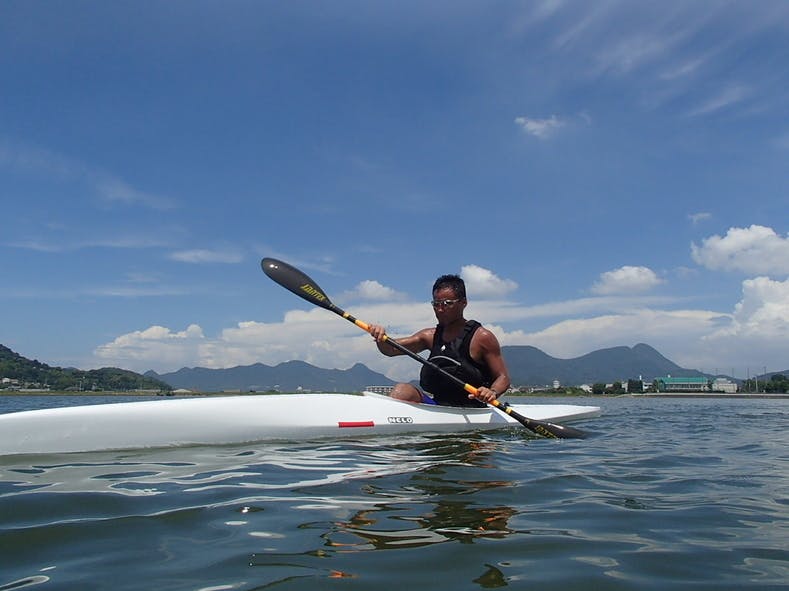
September 10, 2018, just about 1 year since I first tried canoe, I was about to make my debut in a paracanoe race that I had been longing for so much. Unfortunately, the weather was not very good from the start. Balancing with paddles in strong winds and rough waves, I was waiting for my turn that was only 3 races away when the competition was put on hold, followed by the announcement of cancellation 2 hours later... I was very disappointed that I couldn’t make my debut after all.
Official competitions of paracanoe are only held twice a year in Japan, one in March and the other in September. My training towards the next competition in March 2019 started on the very day that my debut was cancelled.
Challenging “Va’a”
The canoe training I’ve been speaking of is more precisely “Kayak” training.
There is another category in paracanoe, which is “Va’a”.
After the competition in September, I started to have a desire to challenge “Va’a” as well.
However, “Va’a” was not available in Kagawa Prefecture. I placed an order as soon as I decided to challenge, but I was told that it would be March or April of the following year before I could receive the Va’a that I ordered in September. After considering all possibilities, I came to the conclusion that the most practical way is to borrow and practice Va’a at the Kibagata Canoe Center in Ishikawa Prefecture, which is an official site for paracanoe competitions, and negotiated with them to let me commute to Kibagata for practices.
Although I had a go at the practice of Va’a, it was not until January 5 and 6 when I was finally able to make it to Kibagata for the first practice, which was less than 3 months to the next competition.
I could not ride Va’a well at all at this point… Unlike kayak, Va’a has an outrigger on one side, which gives it a great stability, but it has its own shortcoming, that is, it is hard to move straight.
Va’a I paddled moved right and then left and kept swaying as if driven by a drunken driver. All I accomplished at the first training at the Kibagata Canoe Center was to sway with Va’a for two days and experience frustration and anxiety that I could not shake off on the way home. However, I knew very well that my time was extremely limited to prepare for the next competition and had decided to do my best within the given time, so while I was in Kagawa where Va’a was not available, I checked my paddling form and performed image-training, and while at Kibagata, I kept riding Va’a as often as and as long as possible.
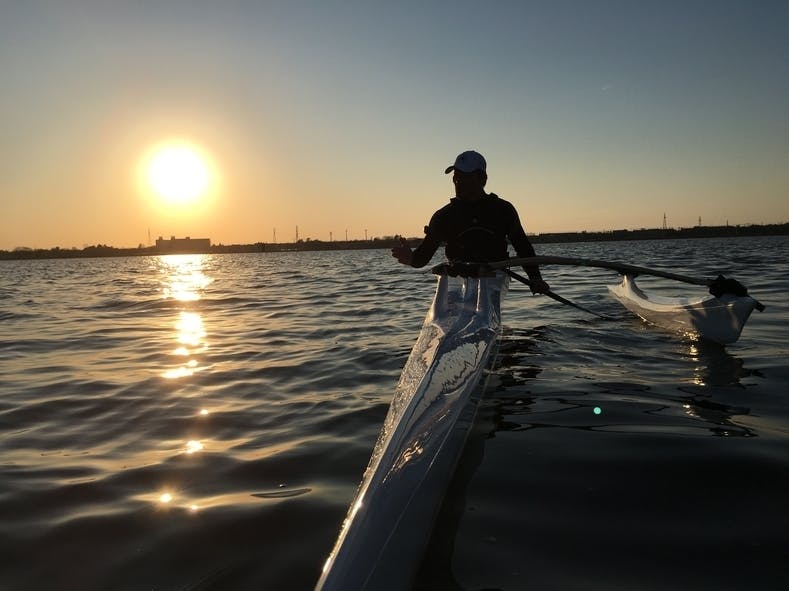
I made several trips to Kibagata before the competition.
While I visited there for the last time before the competition, I finally mastered the technique to move Va’a straight forward for 200m by paddling one side of canoe. It was two weeks to the competition. I was thinking “I made it...!” and “if only I could do the same paddling at the competition...!”
To Condition Training Environment
As mentioned earlier, within less than two years since I started riding a sprint canoe, I was able to reach the skill level that allowed me to compete for a seat on the Japan Team and win second and third places in the two categories atthe competition to select Japan Team members for world competitions 2019, but my accomplishment should be attributed to Kagawa Prefecture’s local enthusiasm for canoe. Meaning, while the number of paracanoe athletes are few, there are many instructors and former sprint canoers (non-handicapped), who are readily available to give me advices when I ask for it and help me to improve my skills much faster than the paracanoe athletes in other areas.
However, when we look at paracanoe from a physical environment point of view, we definitely don’t have enough kayaks, although it is partly because kayaks for paracanoe are very expensive. While kayaks and Va’as designed for paracanoe are required for use to compete at paracanoe’s official competitions, Kagawa Prefecture has only one kayak.
We also want to invite paracanoe athletes from other prefectures to practice together and promote competitive skills, but the lack of kayaks as mentioned above is making it extremely difficult. For example, to invite athletes in wheelchairs, we have to ask them to bring their own canoe, which would require their supporters to load it on a car for them, and depending on the supporters’ schedule, adjusting the training schedule may become very difficult. If we have enough kayaks to loan them, the issue of delivering their own kayak can be resolved. At the same time, securing enough supporters to help load kayaks and give a hand during practice is very important for paracanoe training.
Solo training is necessary, of course, but it is essential for us to train with rival athletes to win a seat for the 2020 Tokyo Olympics, and in order to realize it, conditioning our training environment is the most imminent issue, which includes purchasing more kayaks and requires a lot of money.
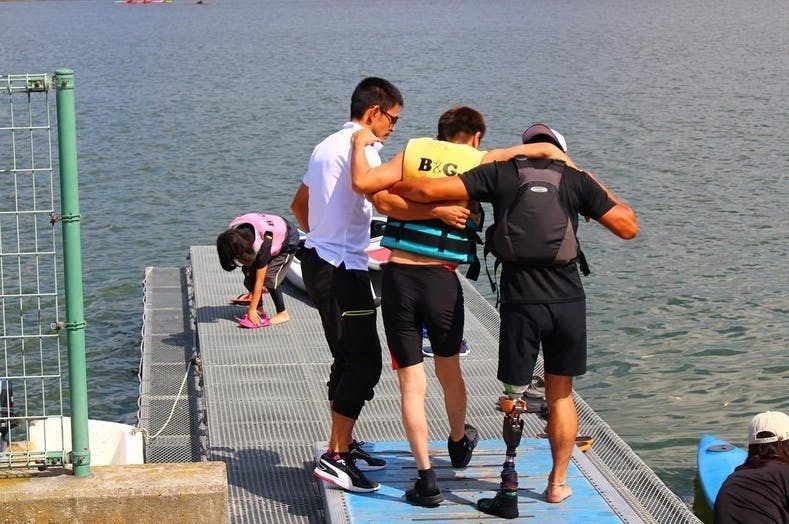
To Promote Canoe to Casual Sport
Canoe competition is generally considered minor competition in Japan. When it comes to paracanoe, the number of athletes becomes even smaller. However, the paracanoe athlete population is increasing every year as a result of various public relation campaigns held by the Japan Paracanoe Association, which is the main body of paracanoe organizations, and by paracanoe athletes and supporters of each region. I believe it is an attractive sport with a great future.
Kagawa Prefecture, where our base is located, has Lake Fuchu (Sakaide City), at which is held an important competition that selects Japan Team Members for Sprint Canoe and Paracanoe, thus an extremely renowned location in the canoe field; however, there are so many residences of the prefecture, who have never come across canoe and remain ignorant about this fact, and so very few paracanoe athletes.
Since one of the two official competitions of paracanoe is held here every year, Kagawa Prefecture (Lake Fuchu) attracts athletes, many of who wish to train there, but owning only one kayak is hindering the promotion of paracanoe in Japan and boosting of competitive spirits.
Paracanoe is also useful to non-handicapped people, who are new to a sprint canoe, for it has better stability than a regular sprint canoe. Owning kayaks for paracanoe, therefore, will contribute to the increase of the canoe athlete population, with or without handicap, which could also have a ripple effect of creating an environment in which many people would feel familiar with canoe and casually enjoy the ride.
Striving for Tokyo Olympic 2020
I could not have won second and third places in two categories at the last national competition merely after a year and 8 months after starting canoe without the support and encouragement from my family and the people around me.
Coaches, who patiently instructed me when I just started canoeing and kept paddling so awkwardly, friends (and especially my wife) who listened to me and gave me some keys to a solution when I struggled so much so that I felt hopeless, and supporters who carried my canoe to the lake and set it on the water for me, their cheer and kindness flamed up my passion towards canoe.

I cannot thank enough to the engineers at the local machine parts maker, who designed and made a special seat to fasten my bottom in a kayak, working till past midnight. The staff from the local media like TV and radio is also helping us to introduce the Paracanoe Association of Kagawa Prefecture to many people in the area and beyond. Many friends and family are spreading the word about my activities as a paracanoe athlete. It definitely strengthens me to know that I have a lot of people who are working with me and for me.

Finally, Koichi Imai is my name. The Chinese character for “Ko” in my name originated in the depiction of a boat sailing straight forward. Despite my name, my life had nothing to do with boats until I discovered canoe, but I would like to move a boat (canoe) straight forward, win first place and fulfill the meaning of my name. (Note: Koichi’s “ichi” means one/first.) Days are limited till the next competition. I will do everything possible and put all my effort into making it to the Tokyo 2020 Summer Olympics with my people!
Thank you very much for reading till the end.
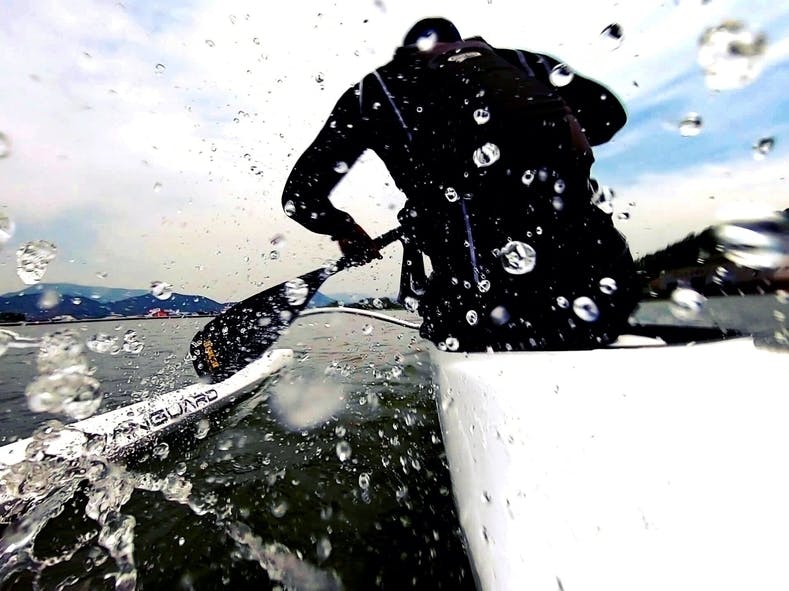
Use of the Donation
・Traveling Cost (within Japan and overseas)
・Competition Entry Fee
・Training Environmental Maintenance Cost
Ensure enough assistants for athletes’ training
Purchasing Kayak
Cost to make training sites barrier-free
・Paracanoe Public Relations Campaign
・FAAVO Fee
Your contribution will be sincerely appreciated.
